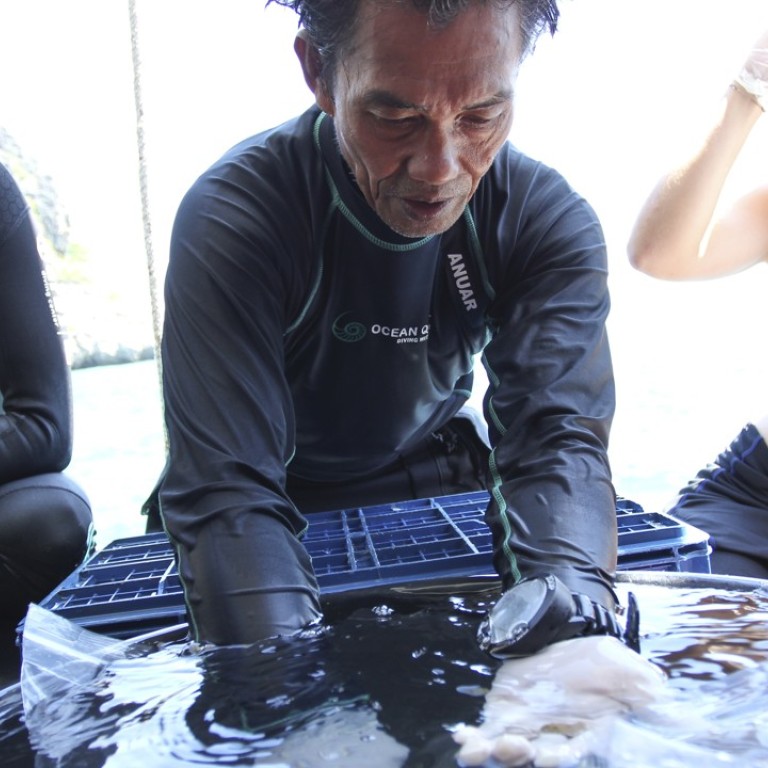
Coral reefs: divers volunteer as ‘gardeners’ to restore dying corals in Thailand
Amid fears that most of the world’s corals will vanish by 2050, hope blooms in the form of an environmentally friendly restoration technique, as witnessed off the island of Koh Ha
In contrast to many of Thailand’s most popular islands, Koh Ha’s charms lie exclusively beneath the water. The frenzy of boats that surrounds the rocky archipelago begins each day at about 10am, as divers and snorkellers arrive and make ready to marvel at what coral still remains in the area, some 35km (22 miles) to the southeast of the Phi Phi islands. Amid the hustle and bustle of tourists, however, some are here with a different purpose. They are intent not only on admiring the corals, but on trying to save them, too.
Coral reefs around the world are in peril. Between 2014 and 2017, warm water caused the longest global coral bleaching event on record, according to the United Nations Environment Programme (UNEP). Australia’s Great Barrier Reef, the world’s largest reef system, lost some 30 per cent of its corals, a report published in science journal Nature in April concluded. A 2011 paper published by the non-profit World Resources Institute, working in collaboration with several agencies including The Nature Conservancy and the UNEP World Conservation Monitoring Centre, suggests that more than 90 per cent of the world’s corals will have vanished by 2050.
Saving the world’s coral to avert a wipeout of irreversible costs
Reefs are an essential part of marine ecosystems, scientists say, sheltering between a quarter and a third of all marine species. Studies show that without them, food chains and local fishing industries would be susceptible to collapse. They have also been found to protect coastlines from erosion and extreme events, research revealing that coral reefs can absorb up to 97 per cent of wave energy.
In a bid to raise awareness of just how dire the situation has become, the International Coral Reef Initiative has declared 2018 as the “International Year of the Reef”.
Efforts by scientists and conservationists to save the planet’s coral reefs have been gaining momentum since the 1970s. But aiding recovery is a slow and laborious process that requires constant monitoring, as well as funding and resources that often do not exist.
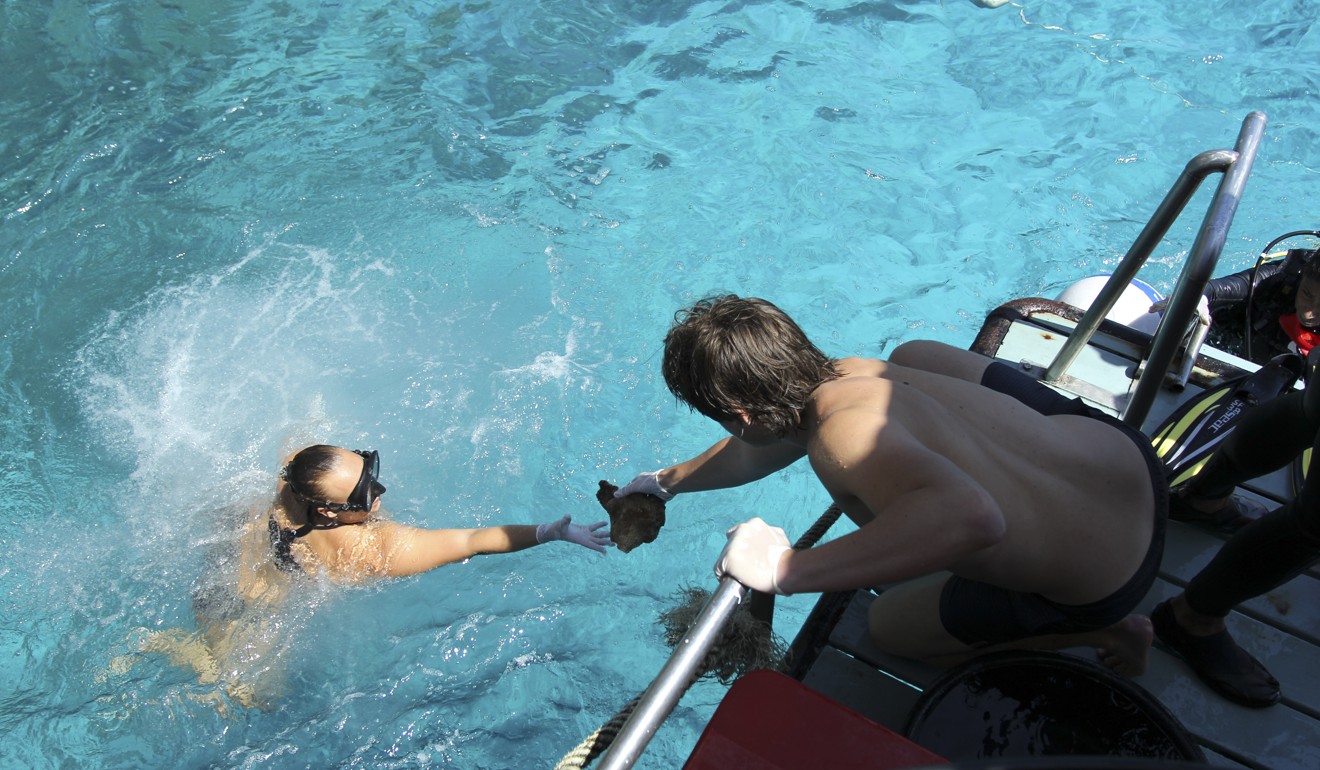
Despite their stony allure, corals that form reefs – so-called hard corals – are, in fact, living organisms, polyps that secrete calcium carbonate to form a protective skeleton. As with many endangered species, corals are slow to reproduce, and growth rates range from just a few millimetres to 10cm per year, depending on the species, available nourishment, and water temperature, salinity and turbulence. It can take up to 10,000 years for a mature coral reef to form.
Some conservationists, however, have now come to see tourism – and diving in particular – as the solution to the global coral-reef decline.
Malaysian oceanographer and conservationist Anuar Abdullah believes that he has found the answer to rehabilitating the world’s reefs. By making simple “coral gardening” techniques available to leisure divers, he says, reef restoration projects can be quickly rolled out.
Coral transplant raises hopes for Great Barrier Reef’s survival
Inspired by reforestation techniques employed in tropical forests, in 1981, Anuar began research into how those same methods might be applied to “underwater rainforests”, as coral reefs are often referred to.
“It was not easy. For the first 15 years, there was only failure,” says the 58-year-old scientist, while running a coral-propagation training course on Koh Ha.
Anuar wanted to find an “organic alternative” to the dominant engineering solutions, which relied on man-made structures, such as concrete or scuttled ships, on which to build new reefs.
“It is not by throwing things in the water that you are going to be able to rehabilitate corals,” he says. “This is called pollution.”
Coral gardening involves growing corals in nurseries and then replanting them on reefs. Such methods have gained popularity among conservationists in recent decades because “Shifting from engineering solutions, such as physically rebuilding reefs with concrete, to ecological solutions, or rebuilding with coral, is much more cost effective and typically the recovery is more successful”, says Dalton Hesley, senior research associate at the Benthic Ecology and Coral Reef Restoration Lab of the University of Miami, in the United States. “It is a win-win.”
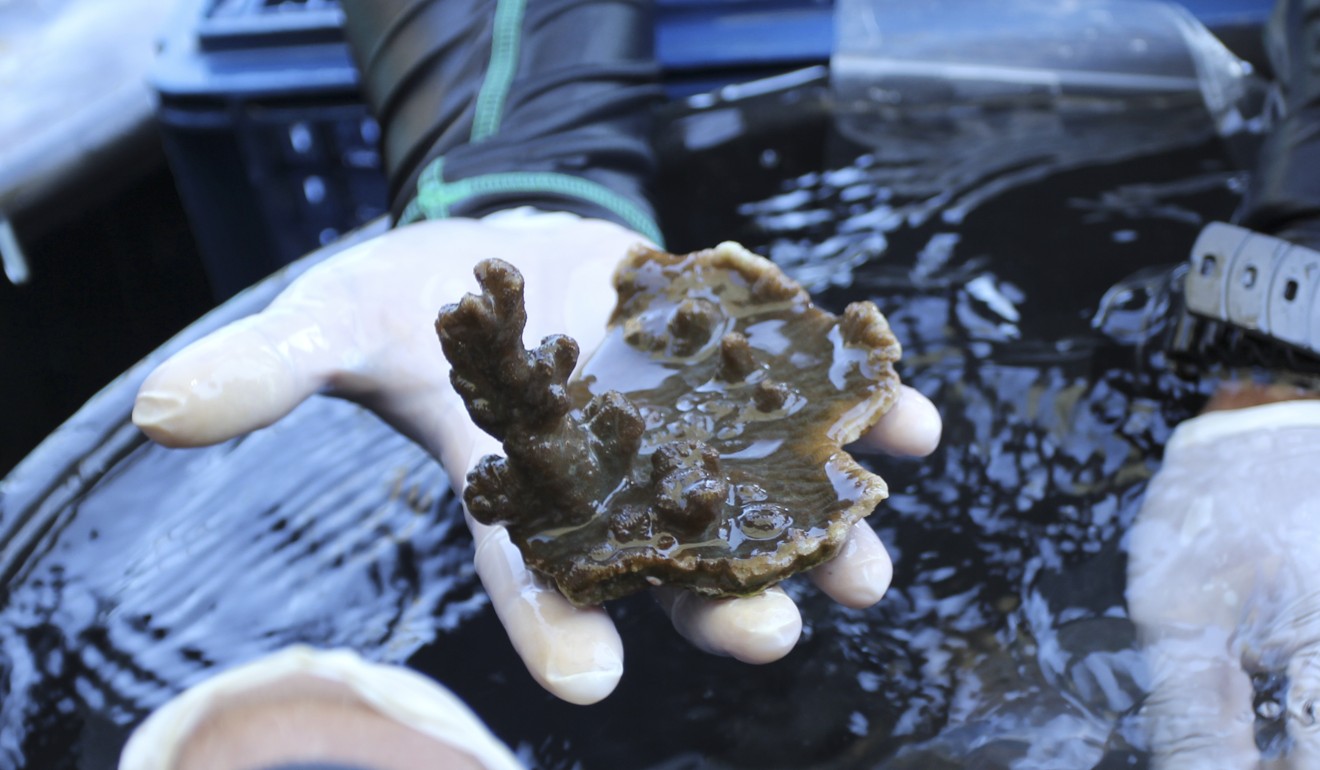
Some of the techniques involved, however, are complex and many still require man-made structures. Anuar began looking for ways to quickly and efficiently bond coral to rock found on the seabed. The breakthrough came in the form of the coral catalyst he developed during a test project in Malaysia’s Perhentian Islands between 2004 and 2005. The adhesive compound would dissolve in a matter of weeks, leaving the living coral attached to the rock. By 2006, the coral catalyst was ready to be used more widely.
As with the rehabilitation of rainforests, the process of rejuvenating reefs begins with the selection of “seedlings” that will be grown in a nursery.
“We look for broken pieces of coral and before they die, we rescue them and give them a second chance to live. When they grow they will become a new colony,” says Anuar.
After identifying the “sick” coral, pieces are brought to the surface, where they are attached to a rock using the catalyst, and then placed in an underwater nursery.
“You only need to put a small piece like this in the rock,” Anuar tells a group of five divers who have travelled to Koh Ha to learn the technique, showing them a fragment he has cut from a larger coral.
Simplifying the technique would have served little practical purpose without a way of putting it into widespread practice but, as an avid diver, Anuar recognised that those who shared his passion would be the perfect partners for coral-restoration projects.
Hong Kong’s coral in crisis as climate change and pollution take their toll
In 2012, Anuar began organising courses at dive schools and resorts, primarily in Southeast Asia, through Ocean Quest, a conservation organisation he established in Kuala Lumpur in 2010. Today, Ocean Quest has representatives in Brunei, Indonesia, Malaysia, Singapore, Thailand, the Maldives and Vietnam, as well as in Mexico and the Caribbean, and offers courses at partnering resorts and dive schools that range from one-day workshops providing a basic understanding of coral gardening to trainer courses for those with a Divemaster certification, which allows those who qualify to manage restoration projects of their own.
To date, Ocean Quest has certified more than 800 trainers and 1,000 coral gardeners. Three of those trainers are based in Hong Kong, but although encouraging feasibility studies have been carried out, no project here is yet under way.
“Of this number, there are approximately 100 people actively doing coral propagation or monitoring coral nurseries,” says Anuar, and Ocean Quest is involved with more than 20 projects.
Manuel San Martín, from Buenos Aires, in Argentina, took the trainer course two years ago on Koh Phi Phi island and is involved in two restoration programmes in the area, a few kilometres north of Koh Ha.
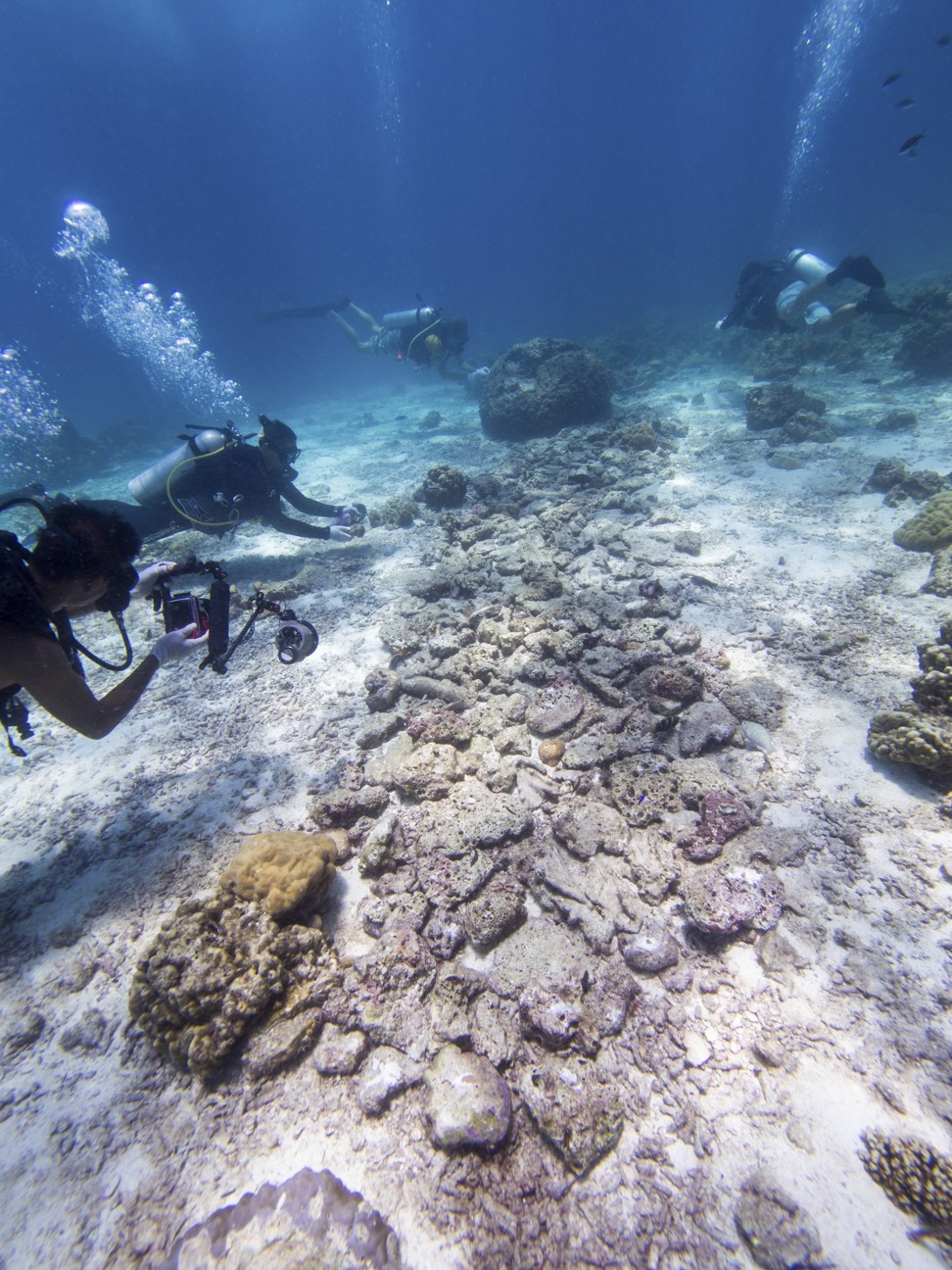
In his more than 20 years as a diver, San Martín says, he has witnessed at first hand the fading of the coral reefs and found himself frustrated at not being able to participate in conservation efforts.
“Everyone who has been in the sea for a long time has seen reefs disappearing. I wanted to do something about it,” says the 41-year-old, who runs Pura Vida Diving Koh Phi Phi. The opportunity arrived when he attended a coral-propagation course conducted by Anuar. “These courses are opening coral restoration up to divers, while before it was reserved for scientists,” says San Martín.
Saffron Kiddy did not intend to become a full-time diver. A television producer in London, she decided to learn underwater videography in order to beef up her résumé – but after training in Koh Phi Phi in 2002, she found herself hooked. In order to be close to the sea she moved to Koh Lanta, an island not far from Koh Ha, and there, in 2006, she founded the diving school Scubafish.
But the beauty beneath the surface around Koh Lanta is vanishing fast.
“This is an area that is desperate for help. There are barely any corals left,” says Kiddy. “We have been involved in many environmental projects but the feeling was that they were too small. We were looking for something more tangible.”
Divers are good partners for this project because we are there every day. We can monitor and protect the coral if needed
That something arrived in the form of Anuar, when, in 2016, Koh Lanta’s Pimalai Resort and Spa organised an Ocean Quest training programme and Kiddy was invited to attend. By December that year, Kiddy had teamed up with Anuar and the resort to launch a coral-reef restoration project in Koh Ha.
Anuar trained the divers. Five were selected from Scubafish and they evaluated the area, looking for sick corals to rehabilitate and suitable locations for a nursery. It has not been easy. Corals are sensitive during the early stages of growth, and many factors can lead to the failure of a nursery, including wave action, pollution and a high frequency of visitors.
“The first nursery was destroyed by a big storm that December,” says Anuar. “We started again and rebuilt it in a more sheltered area.”
Because Koh Ha falls within the Mu Koh Lanta National Marine Park, snorkellers are restricted from swimming without life jackets, which helps to protect the corals from being handled, but tourists remain a concern.
“Divers are good partners for this project because we are there every day,” says Kiddy. “We can monitor and protect the coral if needed.”
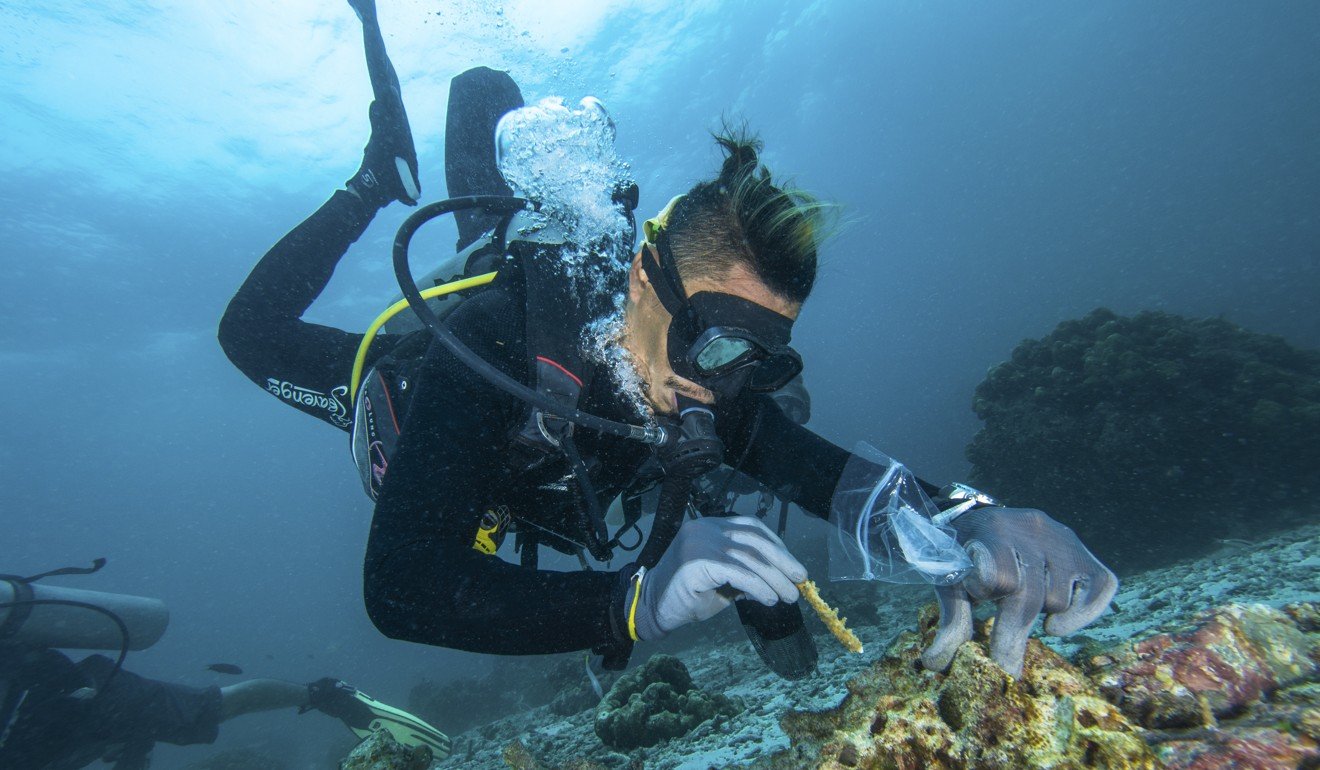
The school provides diving tourists with an environmental briefing before excursions and keeps an eye on them to make sure that no one damages the reefs.
“The propagation won’t determine the success of the project. What makes it successful is the whole system and the people who are going to do it,” says Anuar. “So we mainly target divers as partners, but we also try to engage local communities, like the heads of villages or the schools, so that they understand the value of corals.”
The role of local communities has proven key in similar projects in other parts of the world. In Florida, for instance, the University of Miami’s citizen-science programme Rescue a Reef, which employs techniques similar to those used by Ocean Quest, is providing divers with a basic knowledge of reef restoration, says Hesley. And in the Caribbean, several restoration projects using coral gardening methods are engaging with local communities.
“Part of the success that you are seeing [in those places] is that they are getting a lot of local stakeholders to join in,” the scientist explains. “A lot of these communities rely on coral reefs and fisheries so they know what is at stake.”
Sustainable tourism key to Malaysian marine park’s ambitious plans
On June 1, the government – quoting tourist numbers of 5,000 a day – closed Maya Bay to boats for four months in a blaze of publicity to allow recovery of the area in a project in which Anuar is participating.
Maya Bay is not unusual. According to Dhana Yingcharoen, director of the marine and coastal conservation division of Thailand’s Department of Marine and Coastal Resources, about 78 per cent of the country’s corals are in a “damaged” state. Most affected, he says, are those in the Similan Islands, in Phang Nga province, the Phi Phi islands, in Krabi, and Phuket’s Racha Islands. A number of islands that lie within national parks now close annually, during the rainy season.
“The reason for closures is to protect corals from rising numbers of tourists,” says Dhana, adding that the measure has already produced positive results in the Surin Islands.
Last year, a 20-year policy plan for coastal and marine resources conservation was introduced. Administered by the Department of National Parks, Wildlife and Plant Conservation and the Department of Marine and Coastal Resources, it requires dive-tour guides to pass underwater conservation courses and limits marine activity to designated areas.
However, experts say tourism is not the only threat to corals.
“It is not only global warming, or pollution, or acidification. You cannot really point fingers at a single one,” says Anuar. “Tourism has its own damaging affect, but so does fishing, and industry, which pollute the waters.”

The main factor, claims Dhana, has been the rise in water temperatures recorded since 2011.
Warmer waters cause corals to expel algae living in their tissues – a process known as bleaching, which turns the corals white and can ultimately kill them. Acidification of the oceans, caused by increasing carbon dioxide levels in the atmosphere, also poses a significant threat to the survival of coral reefs.
Moreover, some fear that a complete ban on coral-related tourism would do more harm than good. In a 2017 paper published in the peer-reviewed journal ScienceDirect, scientists from leading universities around the world estimate the value of coral-reef tourism at nearly US$36 billion per year, or more than 9 per cent of the value of all coastal tourism in coral-reef countries. That money, they argue, does not necessarily come at the expense of healthy corals and can play a positive role in their preservation, helping to reduce harmful activities, such as overfishing. Reef visitation, the scientists say, can also help fund and encourage coral conservation.
“There are cases where there is good tourism. It can be done in a way that is sustainable and that brings value to the reef in terms of creating conditions where people will do more to look after it,” says report co-author Mark Spalding, of the Department of Physical, Earth and Environmental Sciences at the University of Siena, in Italy.
Spalding points as an example to Indonesia, where fishermen have stopped using explosives to fish in order to become marine park rangers and tour guides in the areas where coral-related tourism is promoted.
There is always controversy in the conservation area. But if it is taught properly and divers respect the guidelines, it works
Coral gardening has not been without its critics, who argue that restoration is relatively expensive and does not address the problems that cause the degradation in the first place. The resources, they say, would be better spent addressing government policy in areas such as carbon emissions. But even critics admit that it is better to do something than nothing at all.
“There is always controversy in the conservation area,” says San Martín. “But if it is taught properly and divers respect the guidelines, it works.”
To ensure that the principles of the approach are followed, restoration projects require at least one full-time project manager, he explains.
“No real conservation project is possible just with voluntourism,” San Martín says. “You need to have people who are really committed.”

Koh Ha is already fostering hope. Less than two years after the project began, corals are growing in the nursery at an encouraging pace. In another year, some will be mature enough to transplant.
“It has far exceeded our expectations,” says Kiddy. “With this project you can see results very quickly.”
Now, it is expected that growth will be exponential as polyps become colonies that in turn grow and break off to form new colonies.
“Hopefully, with this project we can actually save coral from extinction in the area,” says Kiddy.
To that end, she and her fellow divers will keep jumping into the water every day to protect and nurture the living wonder beneath its surface.

